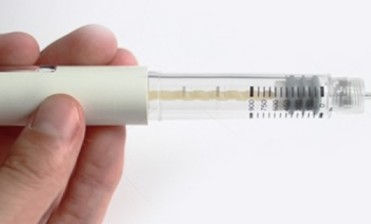IUI – Intra Uterine Insemination

Overview
IUI, or intrauterine insemination, is one of the assisted reproduction methods in which concentrated and washed sperm is inserted directly within the uterus at the time when the ovary releases eggs to be fertilized. This is done if natural attempts have failed or if sperm motility is poor.
Why its done?
In cases where the pregnancy has a fair chance of going smoothly but fertilization is found to be difficult, intrauterine insemination will help.

How do you Prepare ?
Both partners must have a healthier lifestyle in order to prepare for this procedure. Increase your fertility by eating a well-balanced diet and exercising regularly.
It is advised that men should not ejaculate for at least 2-3 days prior to the operation. This increases the probability of reproduction by improving the quality of sperm obtained.
Women must avoid stress and track their cycle of ovulation.
What can you expect ?
It should be remembered that the fertilization window is only a little over twelve hours after ovum release. In order to maximize fertilization, ovulation kits, bloody tests, ultrasound scans and basal body temperature are used to monitor the menstrual cycle closely. The vaginal mucus and its color, texture and the nose of the female cervix are noted. In general, drugs that help develop a stimulated cycle can be used to increase the chances of artificial insemination.
When a sperm bank provides sperm, it is quarantined and frozen and must therefore be thawed before use. When an ovum is released, semen is inserted into the uterus, vagina and cervix of the woman according to the method of artificial insemination. The sperm is inserted twice in some cases during the same cycle of treatment.
A catheter is used to inject the washed sperm into the uterus. It should be noted that if unwashed semen is used, the semen may be instinctively expelled as a foreign body and cause uterine resistance. The body needs time to absorb anything, so a patient’s rest after an IUI is recommended for at least 15 minutes. This naturally makes fertilization more likely.
Post-procedure/ results
Intrauterine inseminations are thought to be more effective than intracervical insemination methods. The reason for this is that sperm introduction into the uterus significantly increases the chances of fertilization.
What risks are there ?
Insemination intrauterine is a common therapy for fertility and includes no surgery or pain. However, some risks and minor side effects occur in this procedure. Some of the risks with IUI are as follows:
- Spotting: inserting a catheter in the uterus can often lead to mild vaginal bleeding, which has no adverse effect on pregnancy.
- Multiple Pregnancy: The use of the ovulation-inducing medications may not generally associate IUI with multiple pregnancies, but the chances are greater.
- Infection: If the experienced professionals are not involved, there is a minor chance that the cervix will get injured during the procedure. This could lead to bleeding or spotting and to a certain amount of infection
Start your Parenthood Journey with Goodwill IVF
We have highly experienced team of fertility experts, including obstetricians and gynecologists, pediatricians, embryologists, andrologists, ultrasonologists, counselors, nurses, and other healthcare professionals always dedicated to help you.
Goodwill IVF
- A Unit of Neha Hospital, Changuvetty Kundu, Kottakkal, Kerala 676503
- Phone: +91 80897 13201
- Email: goodwillivf@gmail.com